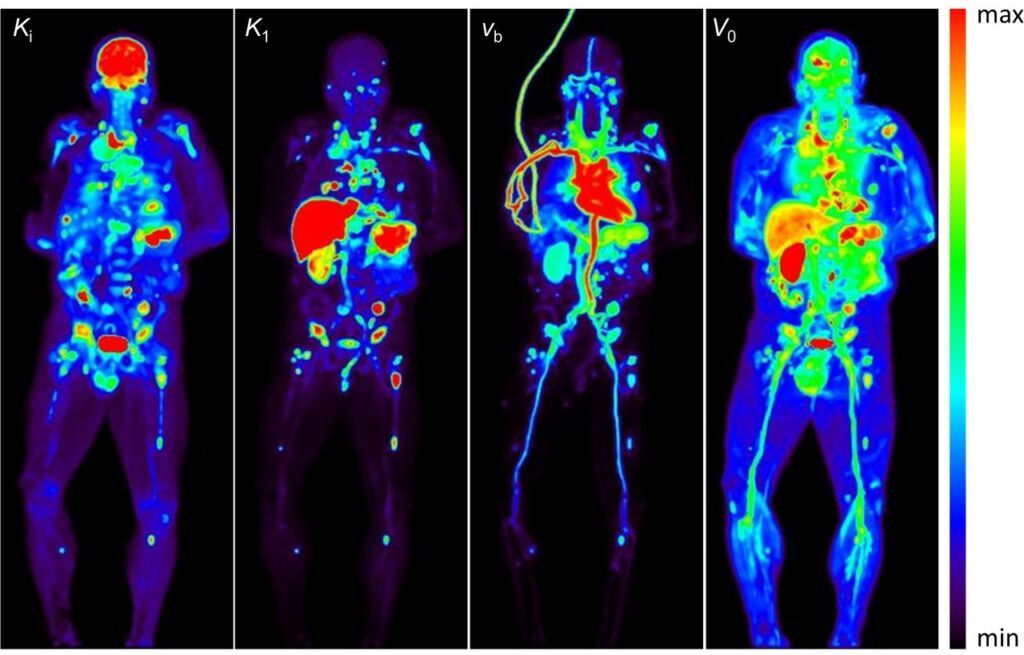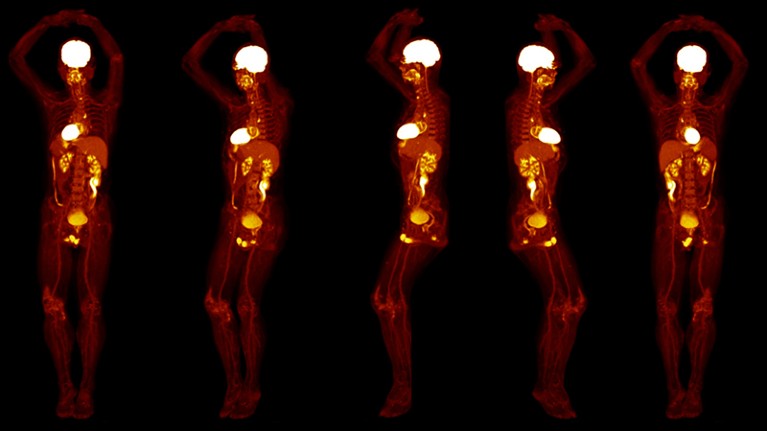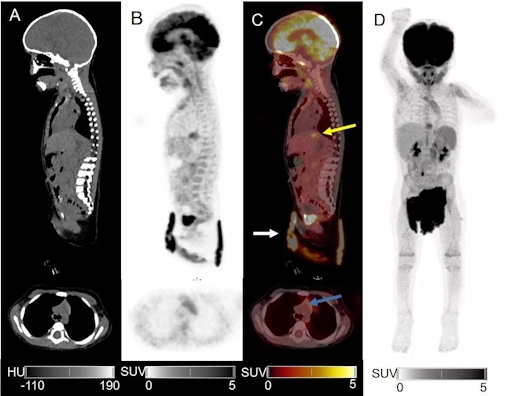When your doctor mentions a whole body PET scan, the first question that probably pops into your head is about the cost of whole body PET scan.

While prices vary significantly based on location, facility, and insurance coverage, this imaging test typically represents a substantial medical expense that many patients find themselves researching thoroughly before scheduling.
What Exactly Does a Whole Body PET Scan Detect?
A PET (Positron Emission Tomography) scan creates detailed images of your body’s internal activity by tracking a small amount of radioactive sugar injected into your bloodstream. Cancer cells, which consume more glucose than normal cells, show up as bright spots on the scan images.
This advanced imaging technique can identify:
- Various types of cancer throughout the body
- Metastatic cancer that has spread to other organs
- How well is cancer treatment working
- Brain disorders, including Alzheimer’s disease and epilepsy
- Heart problems and blood flow issues
- Bone infections and fractures that don’t show up on regular X-rays
The scan captures your entire body from head to toe in one session, making it incredibly valuable for cancer staging and monitoring treatment progress.
Why Your Doctor Might Order This Test?
Several medical situations call for a whole-body PET scan. Oncologists frequently request these scans when they need to determine if cancer has spread beyond its original location. The test also helps doctors decide on the best treatment approach and monitor how tumors respond to chemotherapy or radiation.
For patients with a history of cancer, routine PET scans can catch recurrence early, often before symptoms appear. Brain specialists use PET scans to diagnose conditions like dementia when other tests haven’t provided clear answers.
The Pain Factor: What to Expect
Good news for anxious patients: PET scans don’t hurt. The most uncomfortable part is typically the initial injection of the radioactive tracer, which feels like any routine blood draw or IV insertion.

You’ll need to lie still on a table that slides through the scanner, similar to an MRI machine but much quieter. The actual scanning takes about 30 minutes, though the entire appointment lasts 2-3 hours due to preparation time.
Some patients feel claustrophobic in the scanner, but the opening is larger than an MRI machine. If you’re concerned about this, talk to your doctor about mild sedation options.
Preparing for Your Scan
Preparation starts 24 hours before your appointment. You’ll need to follow a special low-carbohydrate diet and avoid sugar, alcohol, and caffeine. On scan day, you can’t eat for at least 6 hours beforehand, though water is usually allowed.
Wear comfortable, loose-fitting clothes without metal zippers, buttons, or jewelry. Most facilities provide hospital gowns to ensure nothing interferes with the imaging.
Diabetic patients need special instructions for managing blood sugar levels, so discuss this with your doctor well in advance.
How Long Do Results Take?
Most facilities provide preliminary results within 24-48 hours, with complete reports available within a week. However, turnaround times vary significantly between different imaging centers.
Insurance Coverage Considerations
Insurance coverage for PET scans depends on medical necessity and your specific policy. Most insurance plans cover PET scans when ordered for cancer diagnosis, staging, or treatment monitoring. However, you’ll want to verify coverage beforehand since the cost can be significant if you’re paying out of pocket.
Pre-authorization from your insurance company is often required, so start this process as soon as your doctor orders the scan.
Radiation Exposure Questions
The radioactive tracer used in PET scans exposes you to a small amount of radiation, roughly equivalent to what you’d receive from natural sources over 2-3 years. The tracer leaves your system naturally within a few hours through urination.
Pregnant women should avoid PET scans unless absolutely necessary, and breastfeeding mothers need to wait 24 hours after the scan before resuming nursing.

Choosing the Right Facility
Not all imaging centers offer the same quality of service or equipment. Look for facilities with board-certified radiologists, modern equipment, and good patient reviews. Some centers specialize in faster reporting times, which can be crucial when you’re anxious about results.
At PET Scan Lucknow, we focus on providing high-quality imaging with faster report delivery than most facilities in the area. Our experienced team works to make the process as comfortable as possible while maintaining affordable pricing options. For specific pricing information tailored to your situation, give us a call to discuss the most cost-effective options available.
Common Concerns and Misconceptions
Many patients worry that PET scans are dangerous due to the radioactive tracer. The radiation exposure is minimal and considered safe for diagnostic purposes. The tracer is eliminated from your body naturally and doesn’t cause long-term effects.
Some people think PET scans can detect all health problems, but they’re specifically designed for certain conditions. They’re excellent for cancer detection but won’t show issues like broken bones or most infections.
What Happens After Your Scan?
After the scan, you can resume normal activities immediately. Drink plenty of water to help flush the tracer from your system more quickly. Your doctor will review the results and contact you to discuss findings and next steps.
If the scan shows areas of concern, additional tests or biopsies might be necessary to confirm the diagnosis. Remember that bright spots on PET scans don’t always indicate cancer – infections, inflammation, and benign conditions can also appear as areas of increased activity.
Frequently Asked Questions
Can I drive myself home after a PET scan?
Yes, you can drive yourself home after the scan. The radioactive tracer doesn’t affect your ability to operate a vehicle, and no sedation is typically used during the procedure. However, if you received medication for anxiety or claustrophobia, you’ll need someone to drive you home.
How long does the radioactive tracer stay in my body?
The tracer has a short half-life and naturally leaves your system within 24 hours through normal urination. Most of it is gone within 6-8 hours after injection. Drinking plenty of water helps speed up this process.
Will my insurance cover the entire cost of a whole body PET scan?
Coverage varies by insurance plan and medical necessity. Most insurance companies cover PET scans for cancer diagnosis, staging, and treatment monitoring when ordered by a doctor. You’ll typically pay your deductible and co-insurance portion. Always check with your insurance provider before scheduling to avoid surprise bills.
Can I have a PET scan if I’m diabetic?
Yes, diabetic patients can have PET scans, but special preparation is required. You’ll need to carefully manage your blood sugar levels before the scan and may need to adjust your medication timing. Your doctor will provide specific instructions based on your diabetes management plan.
What’s the difference between a PET scan and a CT scan?
A CT scan shows detailed pictures of your body’s structure, while a PET scan shows how your body’s cells are functioning. Many facilities now offer PET-CT scans that combine both technologies, providing both structural and functional information in one test. This combination gives doctors a more complete picture for diagnosis and treatment planning.
The investment in a whole body PET scan often provides invaluable information for your medical care, helping doctors make informed decisions about your treatment plan and giving you clearer answers about your health status.
